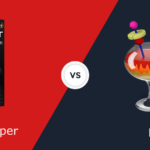Variance and its impact on the result in GPP tournaments
Guaranteed Prize Pool (GPP) tournaments are competitions with guaranteed prize fund in online gambling. They are common in fantasy sports, especially in DFS (Daily Fantasy Sports). Most of the winnings in such tournaments are distributed among players who took the 1st, 2nd, and sometimes 3rd place. For example, usually the winner receives 50% of the prize pool; the player who takes the second place gets 30% and the third one – 20%.
Sometimes the DFS players fail — even with the team well-matched and all the risks taken into account — the opponents get the win. Let’s study out the reasons for such failures.
It’s all about the variance. It is a mathematical phenomenon in probability theory meaning the measure of deviation of a random value from its mathematical expectation.
How does it work? For example, you twice throw the perfect coin – without scuffs and chippings. According to the probability theory, once heads should fall, and once – tails. But that’s in a perfect world. Actually, a coin may fall absolutely differently, since the variance gets down to business. Variance in the casino is a common phenomenon that must be taken into account.
Going back to fantasy sports, the index of variance there directly depends on the number of tournaments. The more often you take part in the game, the higher the probability of winning, as the mathematical deviation decreases.
For example, 50 players participate in the GPP tournament. Everyone deposits $110. The total amount of the prize sum is $5000 (not including the organizer’s rake). According to the results of the tournament, the sum is distributed among the top ten places in percentage terms.
One of the main features used to describe the success (in our case, profitability) of a particular DFS member or other sports betting is ROI (Return on Investment). In betting, ROI is expressed as a percentage and is calculated according to the following formula:
ROI = B/A * 100%.
Where “A” is the sum of all bets made by the player over a certain period; the value of “B” is the sum of all winnings.
Let’s go back to our example. The prize pool of $5000 is distributed among the top 10 players (20% of all participants) as follows:
1st Place-$15002
2d Place-$9003
3d place-$7004
4th place-$5005
5th place-$4006
6th place-$3007
7th place-$2008
8th place-$2009
9th place-$15010
10th place-$150
Experienced Daily Fantasy players have a long-term index of ROI at the level of 19-20%. This, in turn, indicates a 26% probability of obtaining a prize.
Now let’s take a participant who is 20% likely to be among the winners in the tournament. Let’s calculate profitability by the ROI formula:
$1500 / $110 * 100% = 1364%
So, for a player who is not in the top ten, the ROI will be 0%, and for the one who took the 1st place, the ROI is 1364%.
Let’s consider another example from poker. In order to get the numerical value of variance, you can use a special online calculator, which is available on a variety of resources. You need to specify the distance, your win rate, standard deviations (this value can be found in statistical programs). After that, you get a chart that helps you estimate the scale of variance.
Let’s say the player will participate in 10 tournaments. In this case, the profitability chart would look like this:
The yellow line shows that having a favorable outcome, the winning can be more than $160, and the green line indicates that the player is likely to win only 2 games out of 10. Thus, the probability of losing is 45%.
If the player takes part in 100 tournaments, the situation changes. And the profitability chart will look like this:
Variance decreases. In this case, as you can see, the probability of losing is reduced by half – to 21%.
By contrast, the last calculation is made on condition that the player takes part in 1000 tournaments.
Here, the dispersion rates tend to zero values. A larger number of expected options is located at the top of the chart and promises winnings. At the same time, the number of losses is significantly reduced.
Conclusion: real-world evidence shows us that in the long-term perspective the participant of the GPP-tournaments will win oftener.
Finally, some tips on how you can reduce the impact of variance on the chances of winning:
- Try to participate as little as possible in those GPP tournaments where the number of winners is limited.
- In DFS, it is possible to register multiple teams and participate in a large number of tournaments.
- Newcomers should give up GPP-tournaments, where due to the peculiarities of the prize funds distribution, the variance plays a particularly important role in favor of other formats: e.g., H2H or 50/50.
It is important to remember that success in fantasy sports is largely determined by the intelligence of the players. Understanding the variance allows you to better understand what the probability of winning or losing depends on. Variability of results is inevitable in GPP tournaments, so even the most experienced players can play at short enough distances.


















